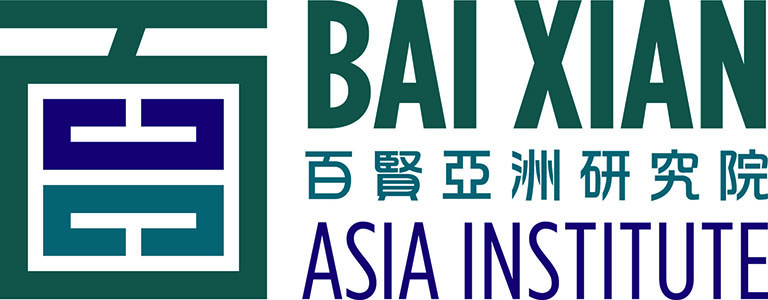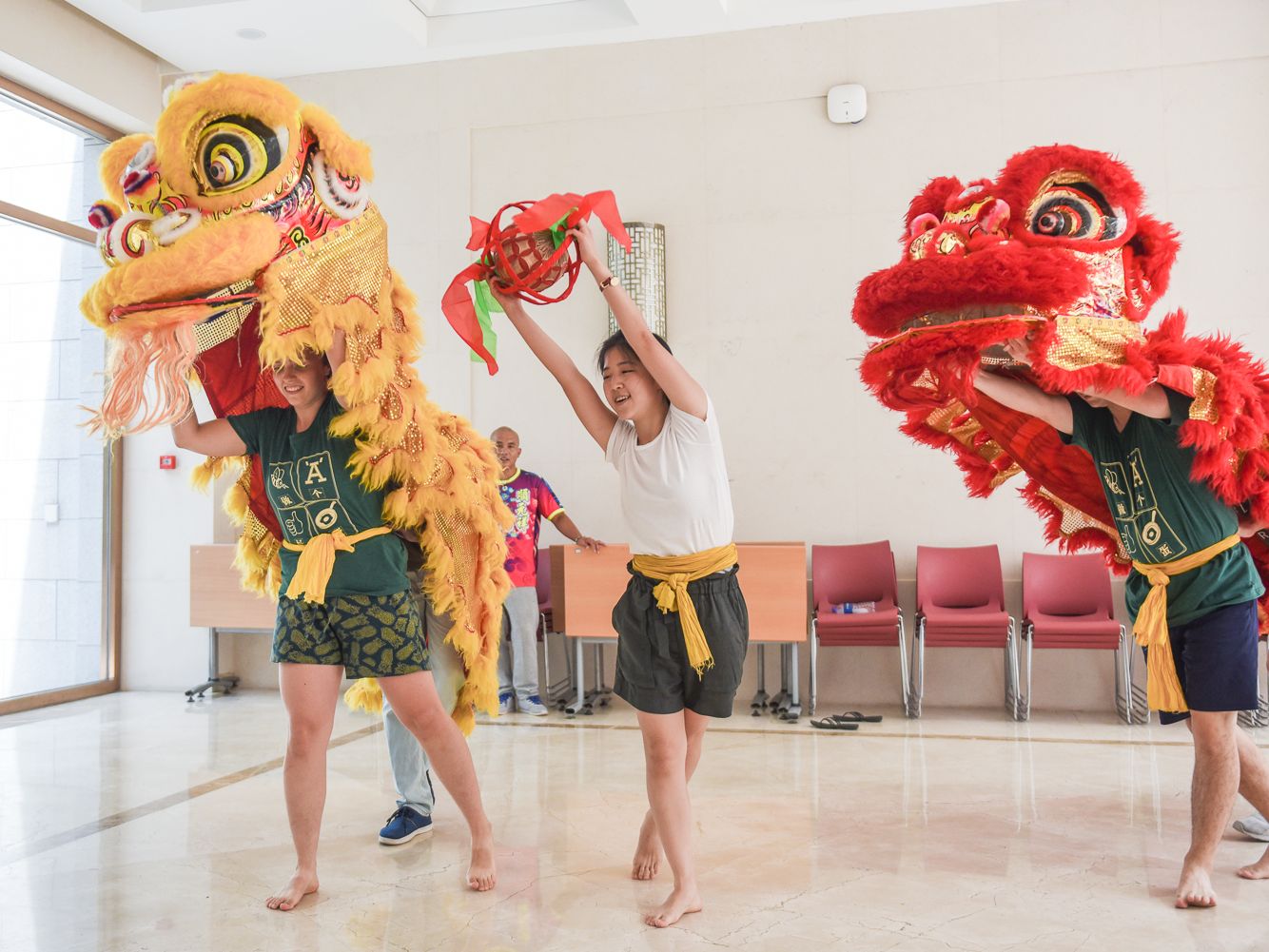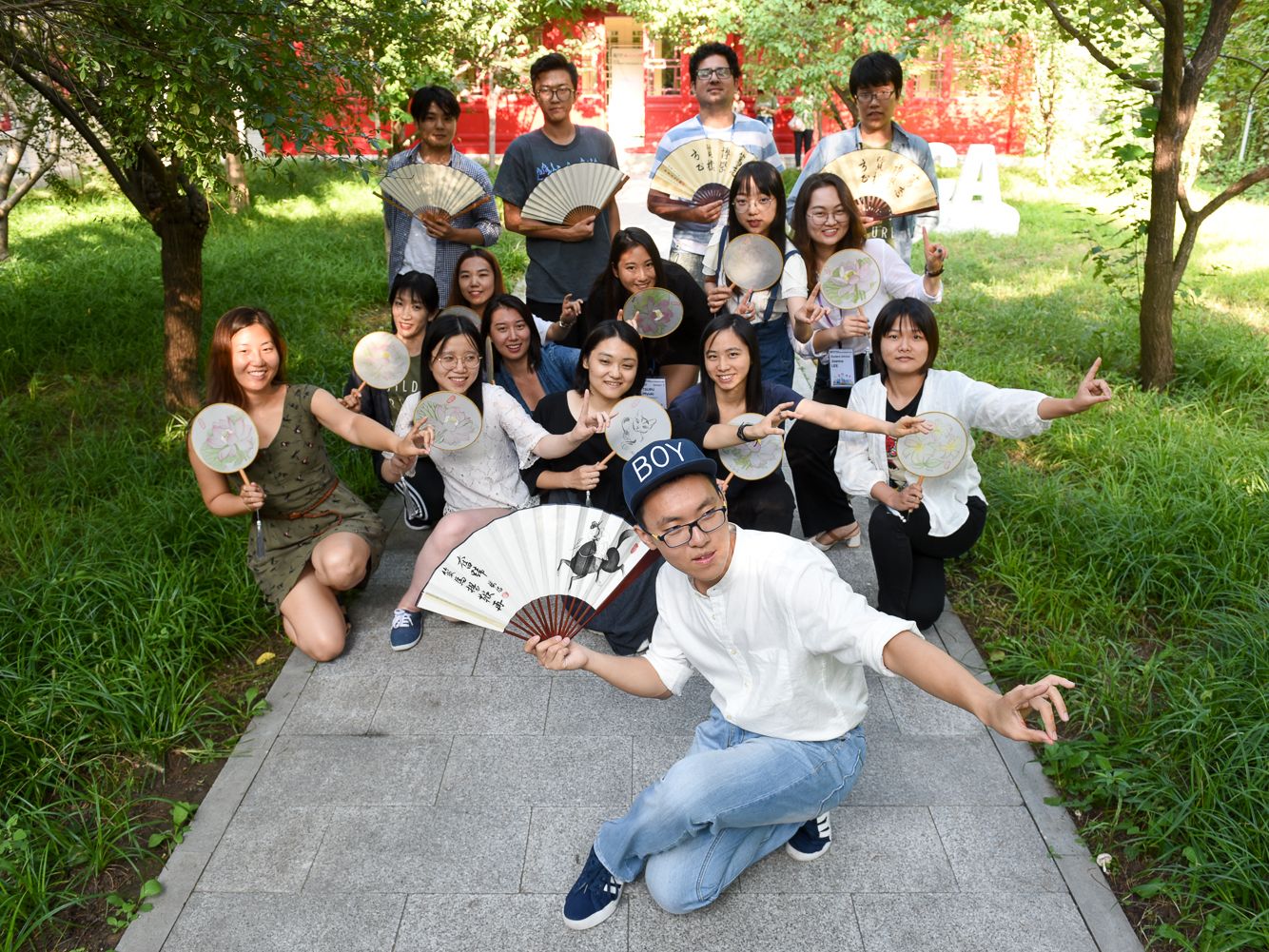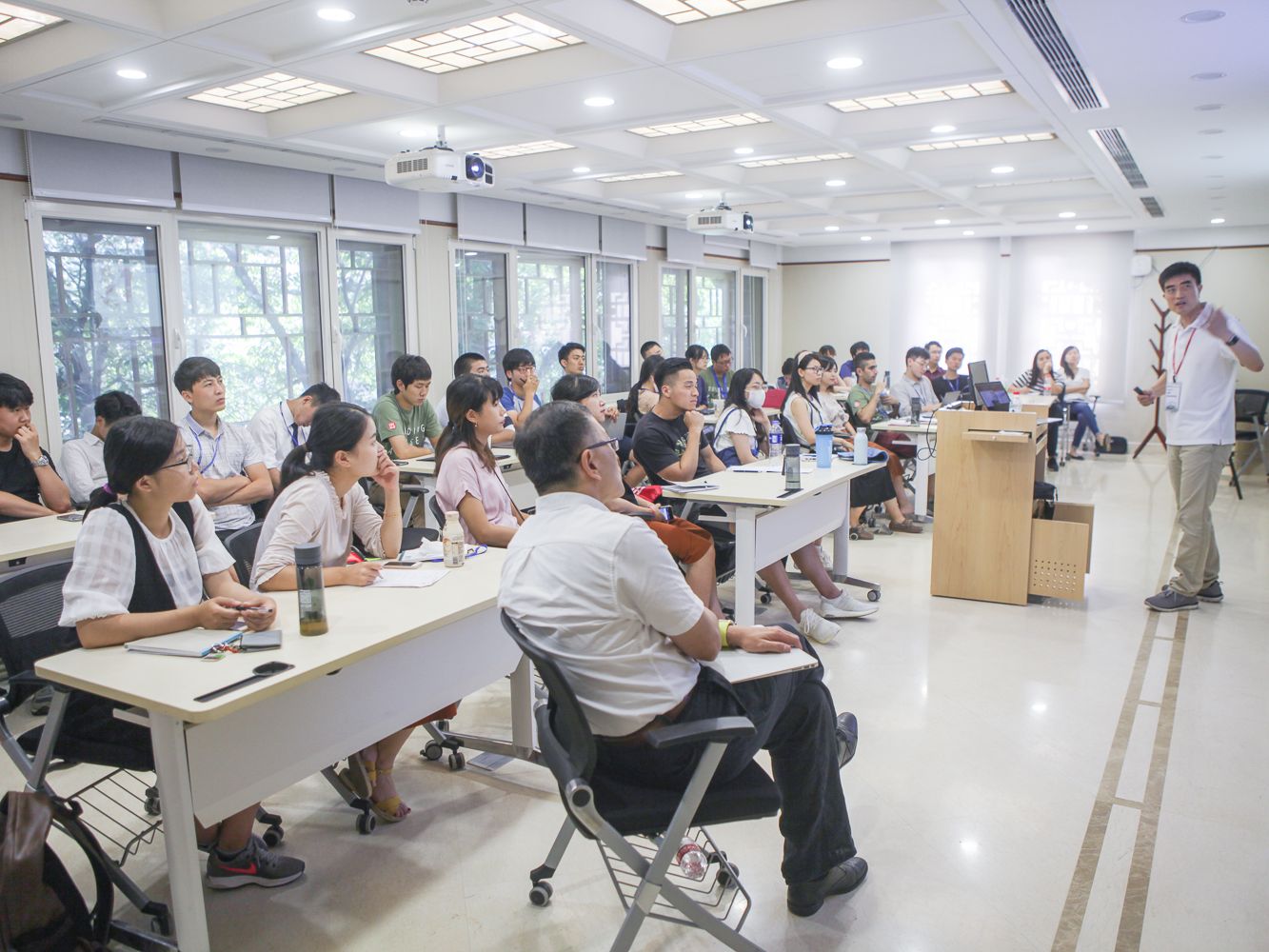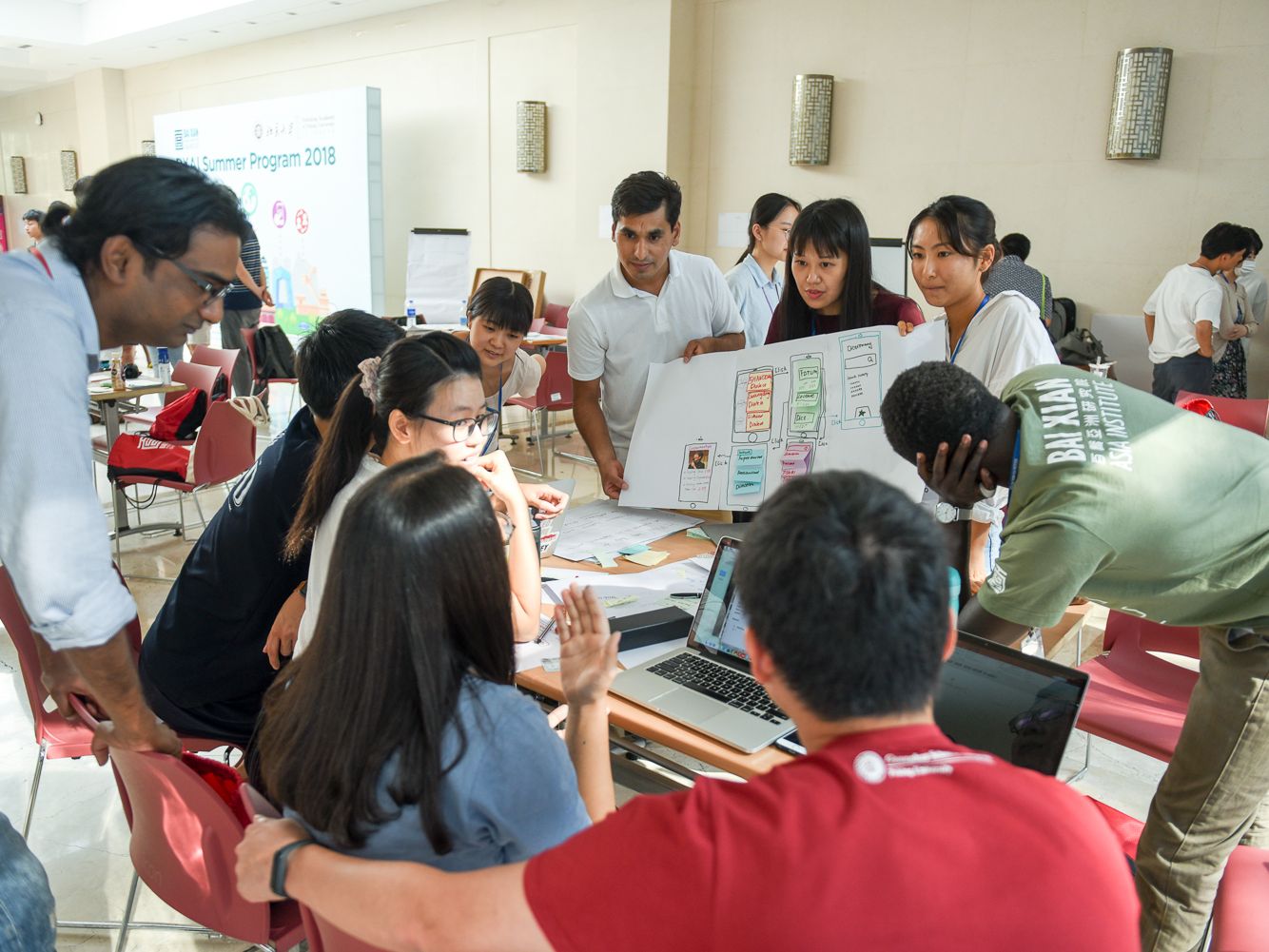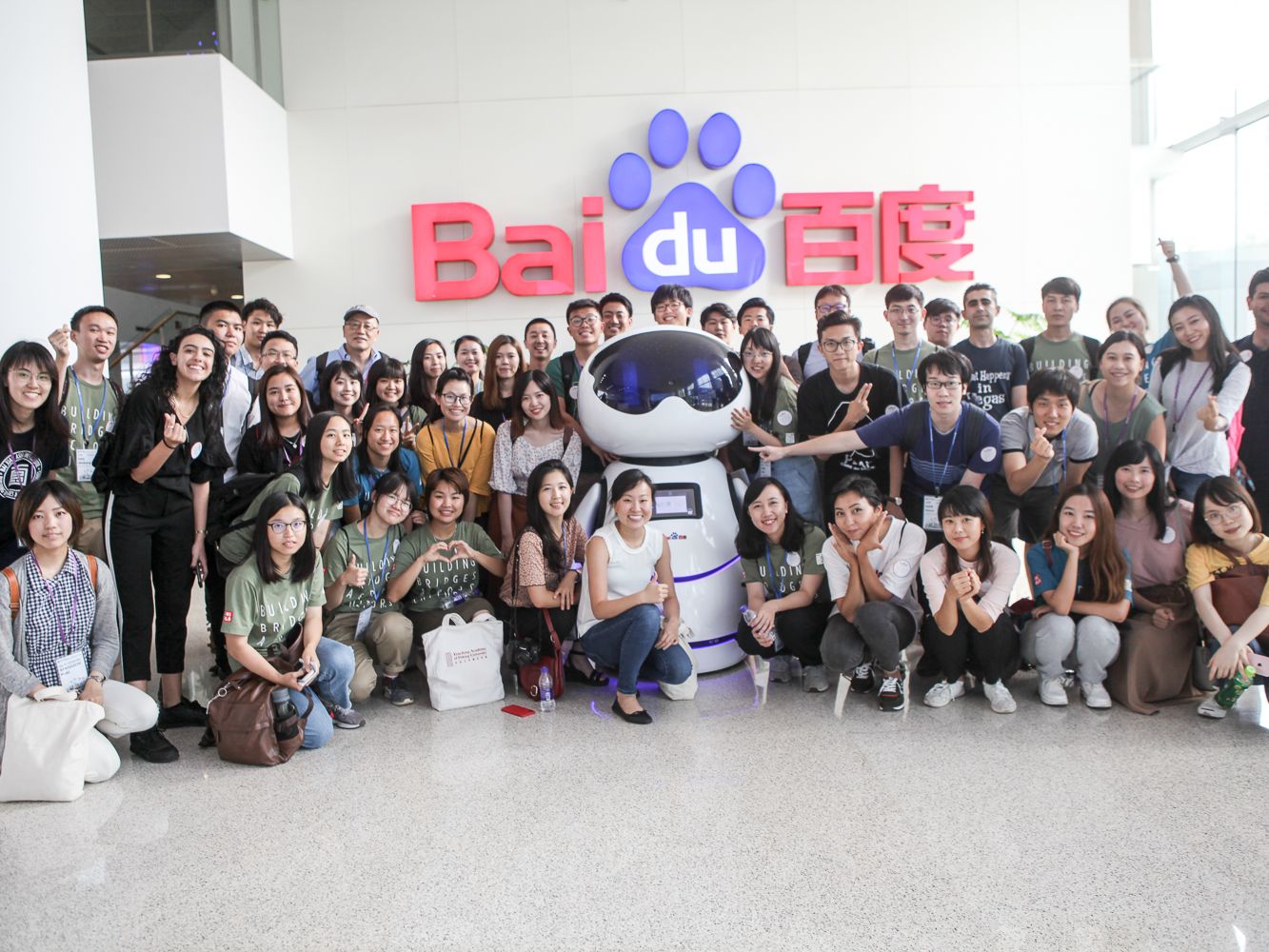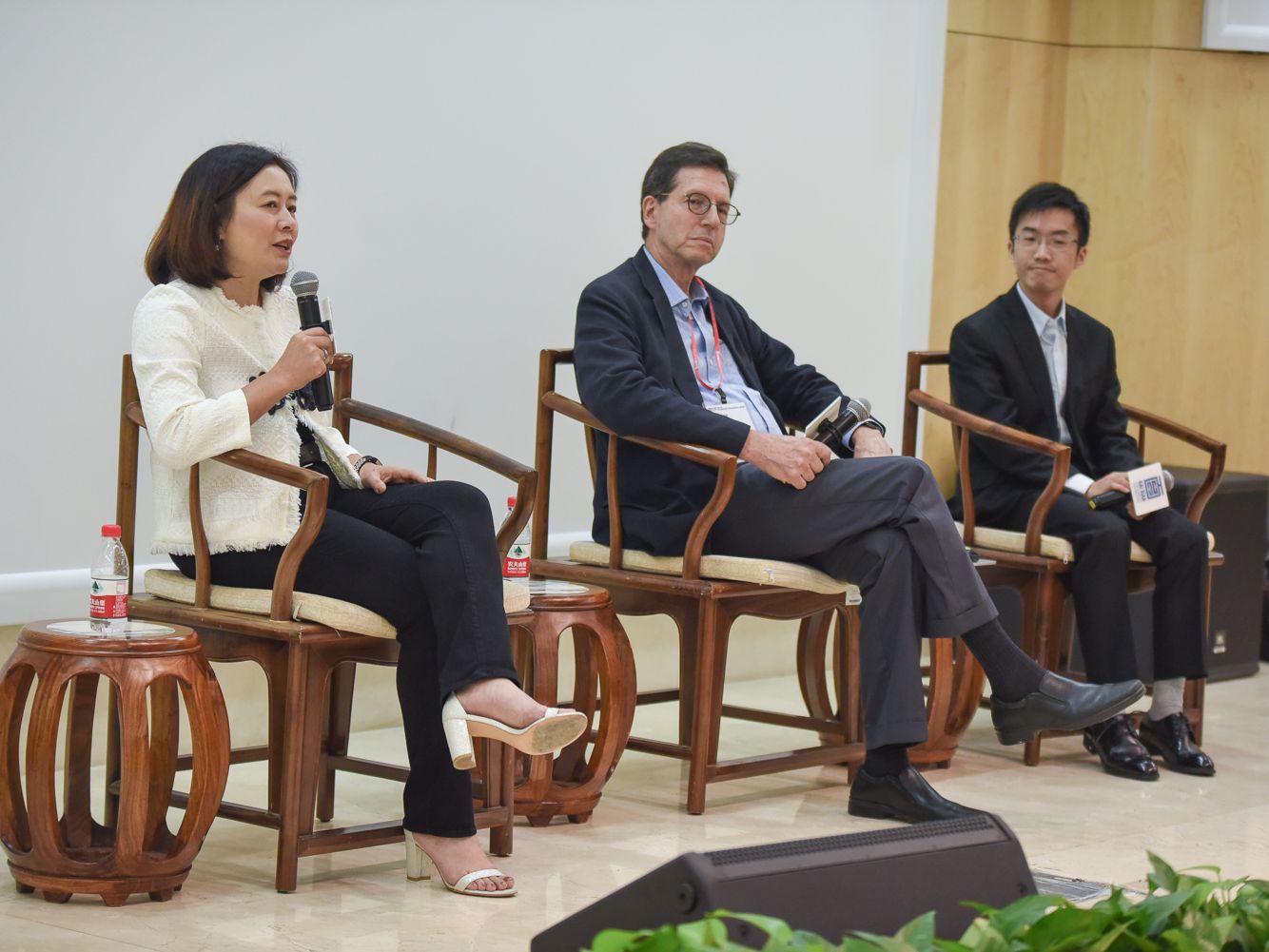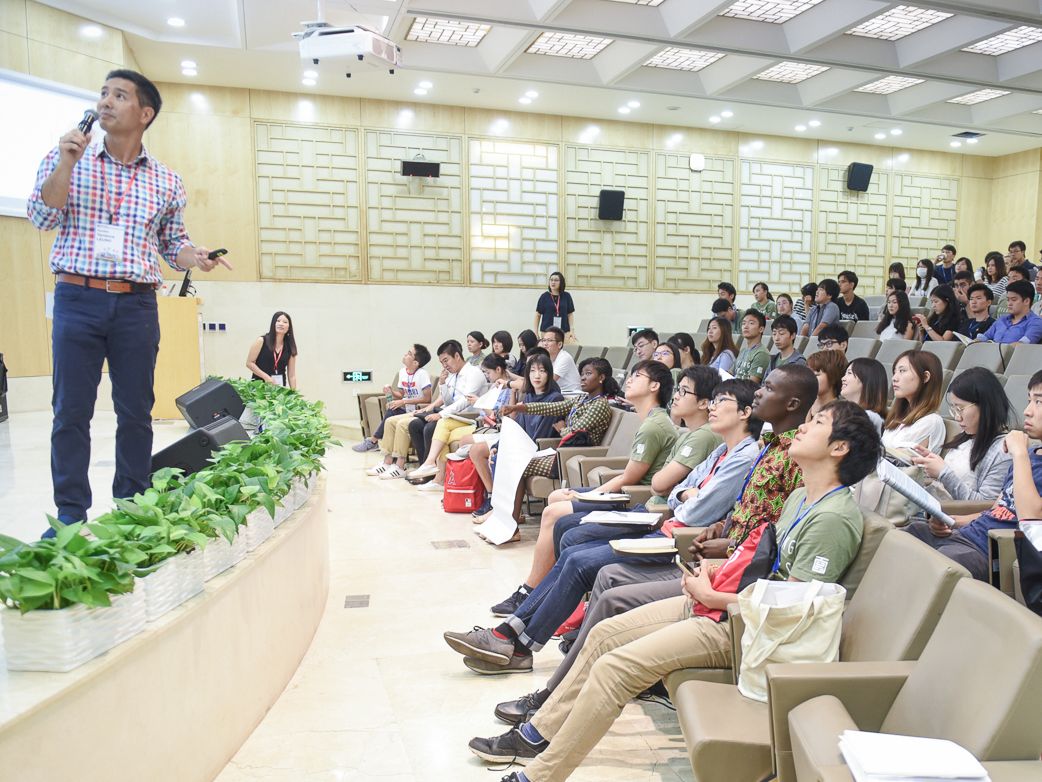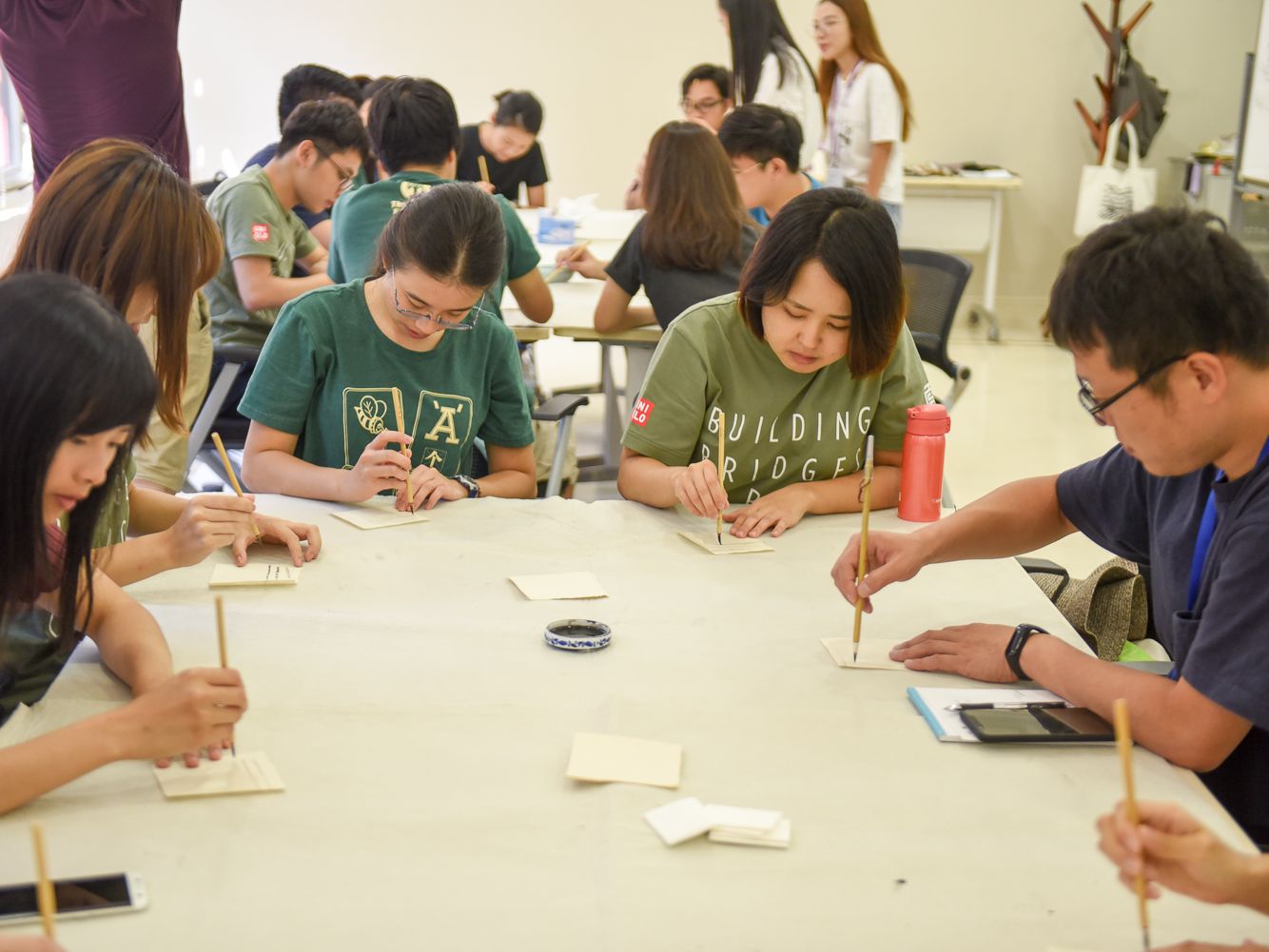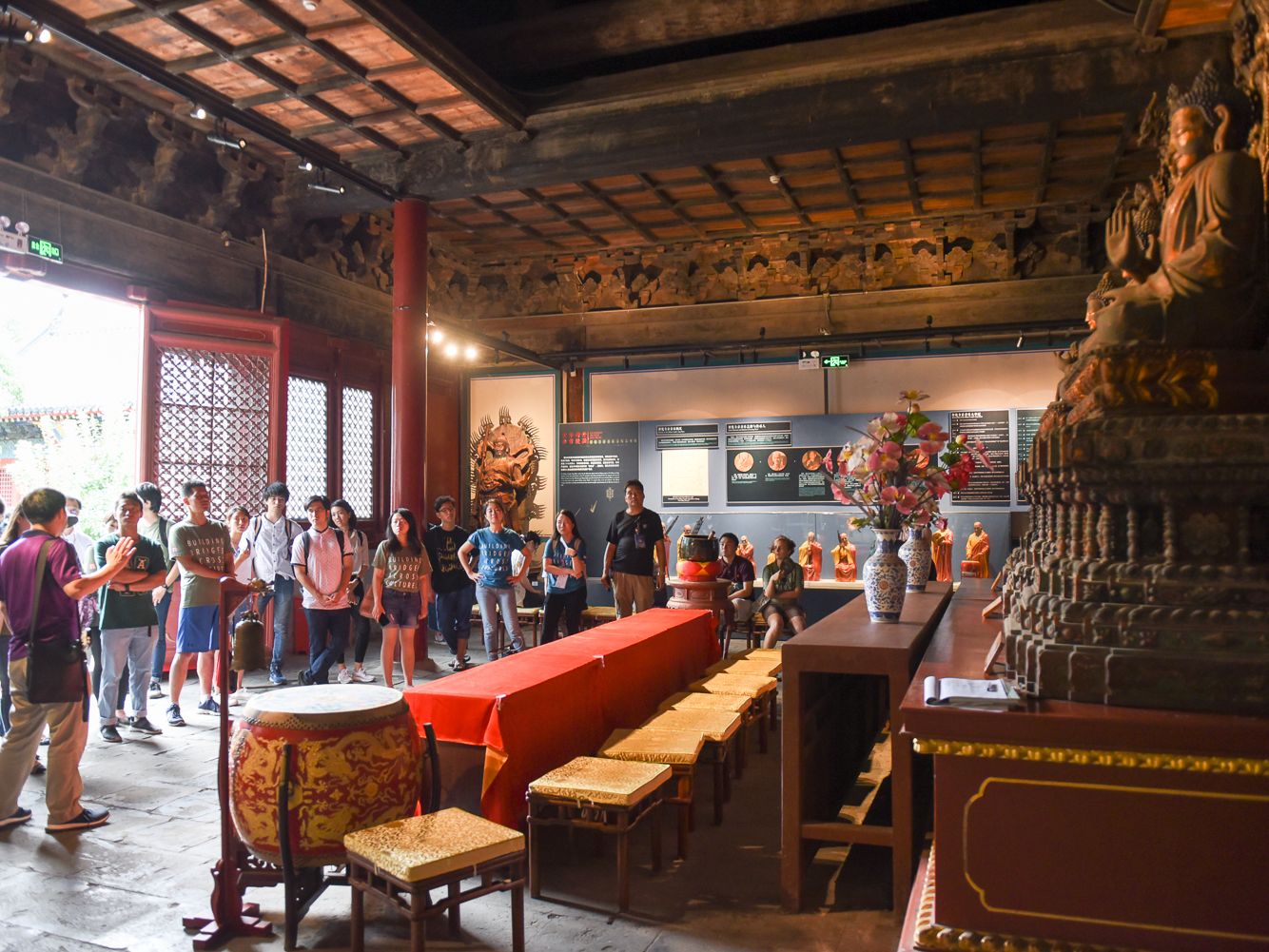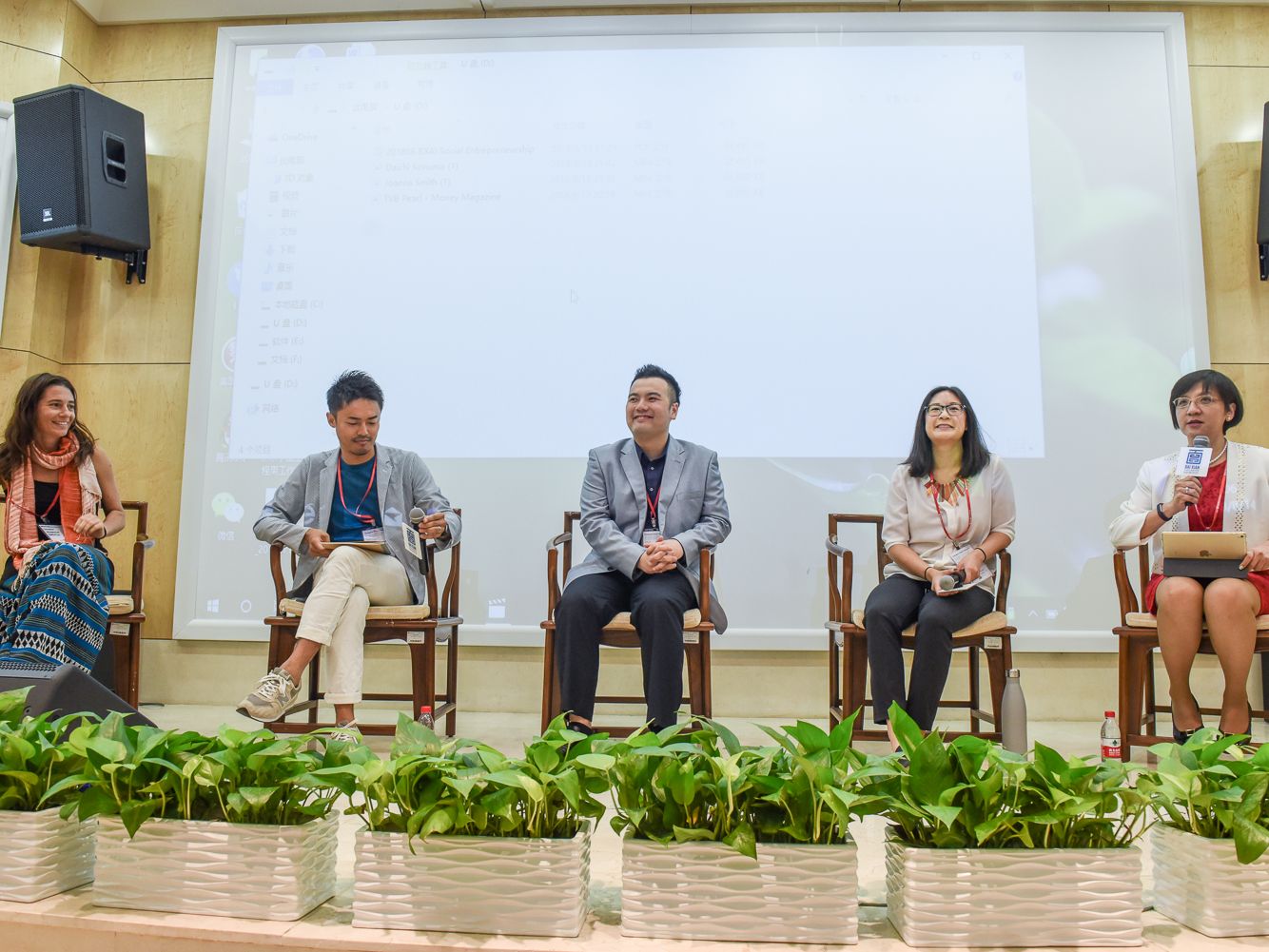After a good night’s sleep following the Great Wall Excursion, we were ready to transition from facing outdoor challenges at Shimenshan to problem-solving within Yenching Academy classrooms. Through workshops, lectures, and field trips, we spent the past week developing intrapersonal skills and exploring this year’s Summer Program theme of “Tradition and Innovation”.
Each day began with self-enrichment workshops led by experts from across Asia. Professor Shirley Lin and Professor Harry Harding returned for their annual leadership workshop, elaborating on different leadership styles as well as the importance of empathy and respect. During the self-awareness workshop run by Mr. Terrance Leung, we identified our personality traits through the Harrison Assessment, and received valuable one-on-one feedback from executive coaches on our leadership skills. From the two entrepreneurship panels, we also learned that business enterprises and social enterprises are not mutually exclusive entities, but often organizations with shared passions.
“What is crazy today will be tomorrow’s common sense,” advised Mr. Daichi Konuma, whose company, Cross Fields, sends Japanese corporate workers to other East Asian countries to do social work.
Morning workshops segued naturally into afternoon lectures, where we were divided into three topic learning streams led by Peking University professors to further delve into our theme of “Tradition and Innovation” in smaller groups.
Heritage Preservation Stream
The “Heritage Preservation” stream, led by Professor Lu Yang, explored the relationships between urban planning, heritage sites, and local communities.
Professor Li Xiaocong, the foremost scholar on Chinese urban history, kicked off the session by introducing students to the characteristics of urban planning since Imperial China. He stressed that today’s architects must innovate to preserve the traditional city—not just individual sites—as an organic entity. On a similar note, Professor Shunya Yoshimi from the University of Tokyo spoke about Japan’s urbanization movement ahead of the Olympics, highlighting the idea of “vitalization”, which describes an innovative urban planning process focused on linking cultural sites as a cohesive entity.
This stream also investigated the restoration of sites such as the Forbidden City’s Jianfu Palace, which some students visited on Thursday. Ms. Li Kuanghan, the China Program Director at the Global Heritage Fund, emphasized the importance of community involvement in heritage preservation, citing examples of how some local residents have been able to build social lives and join community programs around restored monuments.
Students from this stream also had the opportunity to visit the Zhihua Temple and see how the only remaining Ming dynasty temple in downtown Beijing has been transformed through renovation. The preserved mural paintings on the temple walls and performances by monks playing traditional Chinese instruments restored a dynamic sense of life to this important heritage site.
Living Smart Stream
Examining the mixed impact of technological innovation on society was the “Living Smart” stream, led by Professor Chen Dongmin. Students learned about how innovative ways of protecting endangered species can improve biodiversity, and were encouraged to be open-minded towards the technology of gene editing. Evening screenings of sci-fi films such as Gattaca and A.I. Artificial Intelligence encouraged students to consider how academic discourse on technology has entered pop culture.
The second half of the stream dialed in on the debates surrounding artificial intelligence. “We need to make sure that AI will never subvert society,” argued Ms. Danit Gal, a Project Assistant Professor at Keio University. She stressed the need for East Asian societies—generally supportive of the use of technology in society—to have critical conversations about the ethics surrounding artificial intelligence.
Students in this stream also participated in an exciting excursion to Baidu’s Robotics and Autonomous Driving Lab, where they learned about Baidu’s vision of incorporating artificial intelligence into everday life. Students even had the chance to go for a spin in one of the company’s sleek Apollo cars, an autonomous vehicle that adapts to passengers’ needs.
Urban-Rural Integration Stream
Dr. Shengjun Zhu curated the “Urban-Rural Integration” stream, which explored the implications of urbanizing rural areas. Professor Seo Ryeung Ju from Kyung Hee University spoke about how Korea’s rapid urbanization led to both the development of highly connected new towns as well as the evacuation of older districts, while Professor Yosuke Hirayama from Kobe University discussed how Tokyo has likewise witnessed the abandonment of rural areas in exchange for urban redevelopment. Although urban policies in East Asian countries have generally readjusted to prioritize economic and international competition, such innovation often comes at the expense of tradition, generating issues such as income inequality.
This stream featured not one, but two field trips. Last Friday, students travelled to the self-urbanized Zhenggezhuang Village to see how 20 years of economic development and tourism have transformed a once-rural community. The following Tuesday, students visited Beijing’s Urban Planning Museum, where models of the city revealed the history and future of Beijing’s urban planning.
“Top-down and bottom-up approaches to urbanization in private and public sectors are closely tied together in order to realize the harmony of tradition and innovation,” reflected stream 3 student Yuya Hashinaga, an AFLSP Exchange Scholar studying at the University of Hong Kong. Hashinaga believes that tradition and innovation should not be mutually exclusive, but should instead work together in harmony to benefit a society. “Both top-down and bottom-up approaches manifest themselves in different ways across different nations,” he said, “but collaborative atmospheres exist in all.”
Celebrating Chinese Tradition
After completing our topic learning sessions, we regrouped on Wednesday to explore the history and culture of our host country by participating in various Chinese art and cultural workshops. Some of us learned about the philosophy and methods of ink wash painting, and painted a lotus flower on a fan to take home. Others learned about tea ceremony rituals, which involves savoring freshly steeped tea and embracing a meditative attitude. Some students participated in a lion and dragon dance workshop, where they exercised their teamwork skills to support the weight of not only a long, colorful mythical creature, but also one another as they lifted each other up in a series of dance and acrobatic moves! An exercise in harmony, the workshop challenged students to be conscious of each other’s strengths so they could move together as a collective entity.
From learning about contemporary issues in East Asia to dabbling in a variety of cultural activities, we spent last week reflecting on the past while looking towards the future. As we continue to grow our awareness of historical contexts and nurture an eagerness to embrace change, we look forward to our remaining week in Beijing, where we will have the chance to apply much of what we have learned into our final presentations and celebrate the conclusion of this memorable experience together!
